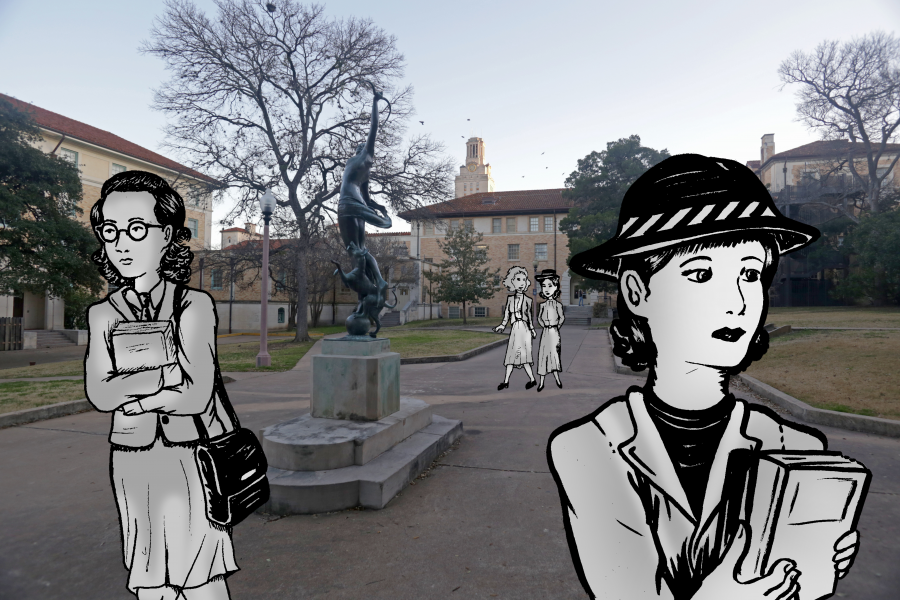Ever since UT opened its doors in 1883, women have enrolled alongside men. However, while they were academically equal to men, women were relegated to living half a mile off campus in the Scottish Rite Dormitory, while male students lived in the centrally located Brackenridge Hall.
According to The University of Texas’ Campus Guide, this changed in 1897. That year, the Board of Regents said female students are “delicate and refined physical organisms (that) should be cared for,” and they declared women on campus had an “urgent need for a woman’s building, close to their work.”
According to the guide, campus planner Paul Cret placed the former Home Economic building between women’s campus and the Tower to “maintain a degree of separation between women’s campus and (the rest of the) Forty Acres.” Women majoring in Home Economics were “close to their work,” but the rest were partly blocked from theirs.
Although the University’s motivations might have been rooted in sexist ideas, they nonetheless addressed a real need for on-campus women’s housing.
In 1903, the “Woman’s Building” was built where the Flawn Academic Center sits today, followed distantly by the Littlefield Dormitory in 1921, Carothers and Andrews in 1935, Blanton in 1955 and Kinsolving in 1958. The one thing they all have in common? Amenities on amenities, with the intention of suiting the academic lifestyle to women.
When it was still in use, the Woman’s Building had a parlor, dining room, elevator and the University’s first gymnasium and pool — unprecedented housing features just for women on campus. Meanwhile, men roughed it in barrack-style rooms with bunk beds, just like summer camp.
Littlefield, Carothers and Andrews were all designed with lobbies decorated to imitate the interior of a wealthy 20th century home. Landscape murals and traditional domestic furniture were commissioned to fill the common areas, maybe with an extended desire to “keep women in the home,” but nevertheless made for a comfy living situation they took advantage of.
Sara Venkataraman, a chemical engineering freshman and Kinsolving resident, said that the amenities designed specifically for women in Kinsolving are great apart from gender.
“I have male friends who are like, ‘You have so much storage space!’ because storage space is something everyone wants, It’s not just a girl thing,” Venkataraman said.
Ironically, the unprecedented features designed for women became staples for the lives of both male and female students at UT. This doesn’t mean the debate about how men and women learn differently has ended, though.
Erica Lee, a chemical engineering and Plan II freshman, said the conversation about men and women learning differently is still going on today.
“A couple years ago, in (competitive high school debate), the topic was whether you should have classrooms separated by gender because boys and girls respond differently to learning,” Lee said. “I don’t know if campus planning, or trying to separate a whole campus, really applies, but it’s still a recurring theme.”
The sexist attitude around women in academics in the early 20th century manifested physically in the delicate and modest way women’s housing was developed. This broken attitude created beautiful and resourceful housing that is enjoyed today as co-ed and women’s only housing — but by choice this time. The resources UT once thought women needed to stay afloat in academics turned out to be great resources for any student, repurposed to improve the quality of life for both sexes as we learn more about each other.















